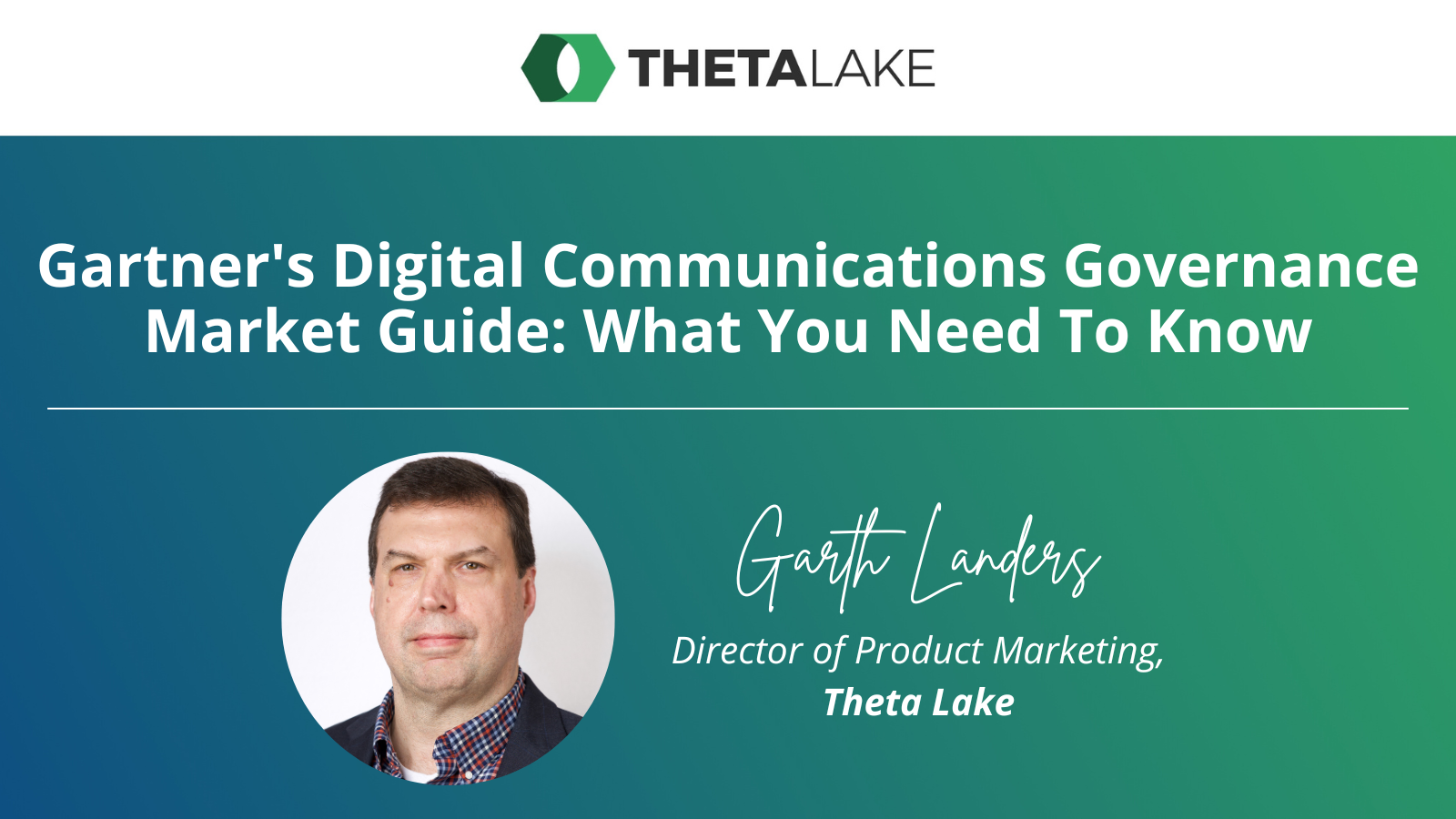
Gartner introduced a new market category earlier this year, Digital Communications Governance (see our earlier blog here). Recently in November, they published the first Market Guide, outlining what constitutes a DCG vendor and offering some guidance.
Some interesting prognostications were made including that “By 2027, 65% of enterprise customers will combine supervision of text- and audio/video-based content to monitor communication governance, up from less than 15% in 2023.”
In our view, this is strong recognition that the market shift from email to digital communications is more than just an expansion of traditional 'e-comms,' such as from email to chat, for example. It is much more expansive, encompassing everything that can be typed, shared, spoken and visualized in the digital workplace, with compliance and governance implications.
While organizations are strategizing on the best way to empower end users and utilize all available modalities including voice, video, text and whiteboards, two legacy approaches to providing compliance are fading away- email and on premise voice archives.
With the shift to unified communications and collaboration platforms, which includes VOIP, organizations are recognizing the ongoing need to retain and preserve voice communications for compliance. However, much like email archiving systems, existing voice archiving investments may not seamlessly fit with this new environment. There is a growing and need for a governance approach, as Gartner rightly surmised, to transition to a more SaaS, cloud-based model that is inclusive of all forms of communications- textual, visual and audio.
What Recommendations Did Gartner Make?
In addition to policy and acceptable use guidance that Gartner recommended, there were some very clear technology recommendations Gartner made including:
“Select the most appropriate DCG solution by choosing those that best integrate with employees’ commonly used tools and that are adept at including new data sources.”
This particular recommendation is critical. As seen in the Gartner research, the list of potential DCG solutions is long, with a number of offerings coming from the archiving or supervision space. Without the ability to connect at the API level with leading UCC providers (as Theta Lake does) and capture all digital communications in their native format, with full context and the ability to proactively apply compliance (such as redaction or remediation), downstream supervision and archiving are incomplete. DCG buyers must need to consider the complete spectrum of communications capture considerations, including coverage of modalities, scalability, repeatability as firms adopt new communications channels, and ability to keep pace with UCC technology changes and updates.
Must Have, Standard and Optional DCG Capabilities
The creation of this category by Gartner is validation of the work Theta Lake embarked upon in 2017 when we purpose built our platform to deliver compliance and security for modern, unified communication and collaboration. This approach contrasts with legacy vendors coming from an email centric or voice-recording-centric heritage, which can result in deficiencies in providing the best customer experience and results across unified voice, visual, video, chat, and file modalities with meshed tools.
In the DCG Market Guide, Gartner helpfully outlines a series of “Must Have”, “Standard”, and “Optional” capabilities for DCG providers. Some of the more interesting focal points Gartner listed are in the “Optional” category, which if they were listed as “Must Have” might negate the inclusion of most of the vendors listed. One of them should be considered as a key baseline in buyer considerations: 'A complete reconciliation and auditing of captured communications, from source to storage.’ With many of the 2.5B in fines over the last two years attributable to insufficient recordkeeping, we believe that strong reconciliation capabilities, that demonstrably validate that unified communications have been captured, archived and are retrievable, should be mandatory in DCG offerings.
Similarly, Gartner places “Capturing and rendering advanced characteristics of communications, such as reactions and emojis” as an optional component of DCG. Based on our discussions with clients, and feedback from over 600 financial services professionals in IT and compliance in our recent annual survey, this capability is more than an optional, but a must have. Without the ability to capture and render today’s dynamic visual content as it appears in communication streams, compliance professionals are left to make their own best guess as to intent and meaning during fractured, disjointed renderings of digital communications.
We are happy to see this market guide, and for the last 6 years plus, Theta Lake has been at the forefront of delivering Digital Communications Governance. That's reflected in the direct investment for our DCG capabilities and certified partnerships with the leaders in Digital Communications mentioned in the market guide, such as Slack, Zoom, Cisco, and RingCentral. Our contribution to the DCG market is embodied by our double digits in patents and technology delivered across the core use case categories outlined in this market guide of Archive, In-Place Integration, Investigation, Compliance, Governance, Analytics, and Trade Reconstruction. Finally, our value to the DCG market is personified by our 100+ customers in over seven countries, and the voice of those customers in our 100% ‘Would Recommend’ Rating and 4.9 out 5 star rating via Gartner Peer insights.
We will continue delivering value to this market and our customers, and we would be delighted to work with any readers who want to see the fastest time to value with the strongest impact on DCG risks in the segment. Join or request a demo and we'll prove it to you.



